Recent Posts
Answering 3 Common Questions About Sewage Backups
5/4/2022 (Permalink)
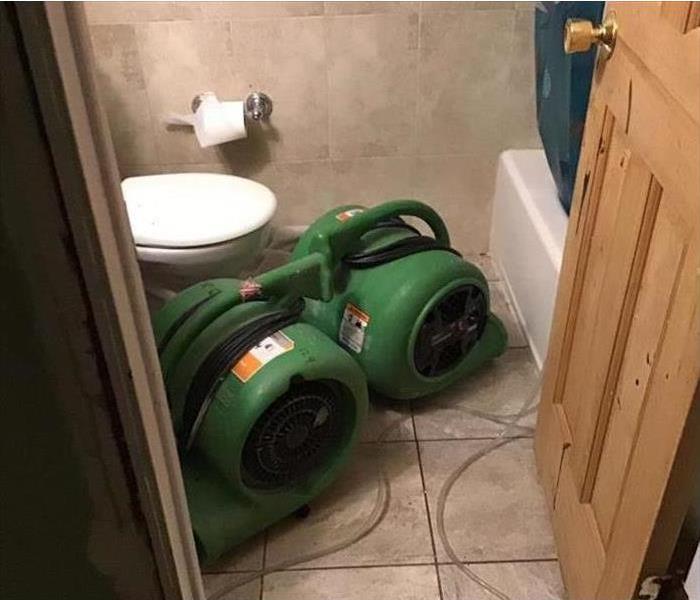 Water damage cleanup in Doylestown, PA.
Water damage cleanup in Doylestown, PA.
Three Common Questions About Sewage Backups
Storms do not just cause damage to the exterior of your Doylestown, PA, property. They can harm the interior of the building, as well. For instance, heavy rains can cause a sewer backup in the basement. Here are answers to some commonly asked questions about this emergency.
1. What Causes Sewage Backups During Storms?
During a big storm, rain water ends up in the local sewers. This can overwhelm the sewers. If they cannot handle all of the fluid, the water backs up into sewer lines and flows into buildings.
2. How Can You Prevent Sewage Backups?
While you cannot stop the next storm from hitting your area, you can reduce the chances of the storm flooding your building. Start by installing a check valve into each floor drain. This valve should block sewage from coming through the drains.
A sump pump is also a useful tool during storms. It can drain excess water from the premises before the flood gets too deep.
3. What Do You Do After Sewage Backups?
A sewer backup typically involves bacteria-filled black water. This water should only be handled by professionals. You should thus limit your time in the affected areas until the fluid recedes. In the meantime, call storm damage restoration experts who can safely remove the water.
If you do have to enter the basement, be sure to cover exposed skin and wear rubber boots. You should also turn off the circuit breaker to avoid electrocution.
Flood waters may additionally turn off pilot lights on any appliances you keep in the basement. This could lead to a gas leak in the building. If you do smell gas, leave the premises right away and call your utility company.
A sewer backup can contaminate your property after a storm. With the help of emergency restoration specialists, however, you can get your commercial building back to normal.
How To Keep Toilets From Overflowing
4/23/2022 (Permalink)
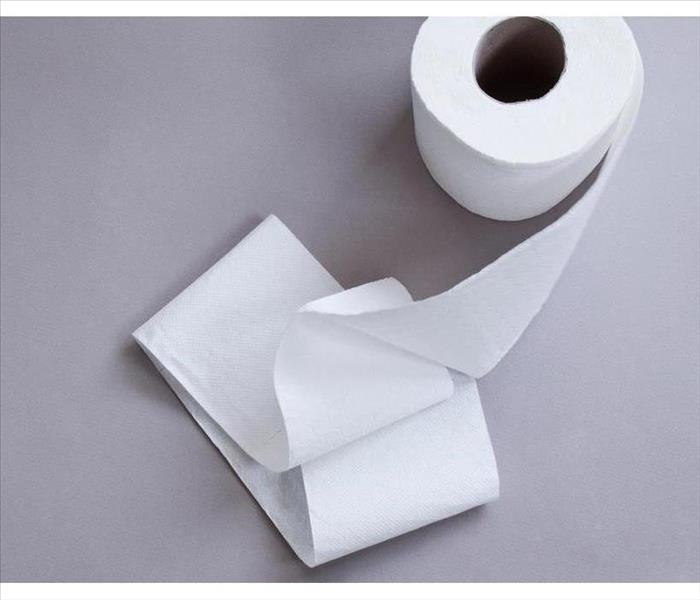 Use the right toilet paper.
Use the right toilet paper.
How to Prevent Toilet Overflowing
Every business has struggled with a clogged toilet at some point. The best way to prevent this from happening is to use these tips to keep your toilet from overflowing.
Use Signs and Plaques
Many people do not know what is flushable and what is not. Some things that claim to be flushable can wreak havoc on your plumbing. Nonflushable items include:
- Wipes and tissues
- Feminine products
- Napkins and paper towels
- Oils and plastics
All of these can and will cause toilet overflow and blockage problems. Having signs about what is flushable and what can't be flushed not only informs people but can help prevent them from putting odd items into your toilets.
Have Trashcans Available
The simple placement of trash receptacles in each stall and the bathroom's main portion can help prevent a clogged toilet. Remember, you also have to keep these receptacles clean so that they don't overflow and stop patrons from using them.
Correct Slow Drains Promptly
If you have a major overflow problem, you will have to involve a sewage remediation company in New Briton, PA to take care of it, but if your drains are just slow, you might be able to do it yourself. Use proper drain clearing techniques and consult a plumber if necessary. Correcting slow drains helps to stop major issues later on.
Use the Right Toilet Paper
Although it might not seem like it, the very thing that is supposed to be flushable might not be. To check if your toilet paper meets the requirements, you can use a bowl of water. Put a small amount of the tissue in the bowl and leave it for an hour or two. If it mostly dissolves, it's good. If it doesn't, you might want to consider changing brands.
A clogged toilet is a serious issue for any business. Although nothing can completely prevent it from happening, there are a few things that can help you mitigate your risk.
3 Ways To Prevent Mold at Your Business Property
4/12/2022 (Permalink)
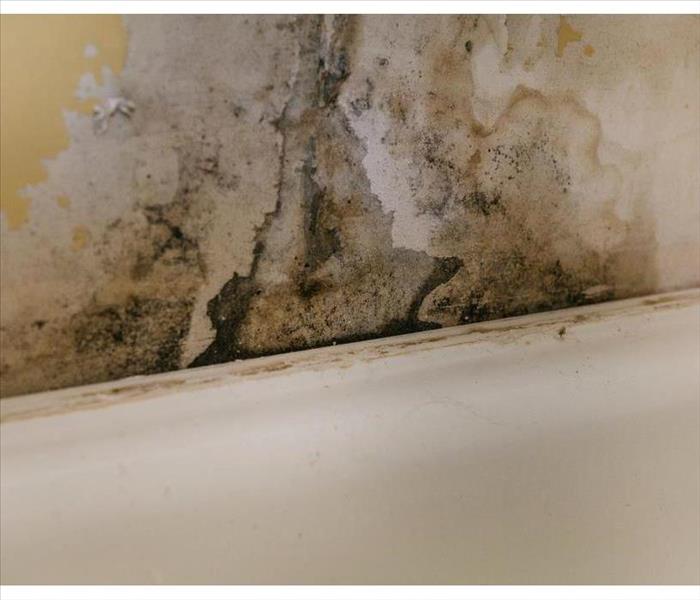 Water damage and high humidity levels can cause serious mold issues.
Water damage and high humidity levels can cause serious mold issues.
Prevent Mold at Your Business
Mold can do serious damage to your Buckingham, PA, business if it goes unchecked. Because most types of fungi tend to grow quickly in moist, humid environments, even the smallest instances of water damage could cause a considerable mold problem. Keeping a few preventative tips in mind can help you protect your business, employees and valued customers.
1. Monitor Humidity Levels
Mold growth tends to increase in humid areas, such as restrooms and in the employee kitchen. Mold does not require sunlight to grow or spread, so if mold happens to take hold here, it can grow unchecked until the odor it releases alerts you to the problem and by then, the growth could be quite large. Monitor and control humidity levels throughout your building and use ceiling or standing fans to prevent high humidity levels.
2. Do Not Delay Flood Repair
Water damage tends to occur most often during incidents of flooding, whether as the result of violent storms or something as simple as a water line break in the employee fridge. Despite the degree of damage, putting off repairs could lead to serious mold issues. If flooding is severe, you may want to call in a mold mitigation and removal service for assistance to ensure the job is completed correctly.
3. Store Documents Properly
One way to practice mold prevention is to store paper documents and records in a way that does not encourage fungi growth. Choose air-tight plastic containers with lids that snap down so moisture cannot affect the documents or hire a digitizing service to transfer paper records onto a cloud storage server. This can help you save space and reduce the risk of mold growth in your building’s basement or ground-floor storage room.
Water damage and high humidity levels can cause serious mold issues at your Buckingham, PA, business. Knowing how to prevent its encroachment may help you protect your business and avoid costly repairs that might come with ignoring the problem.
How To Prepare Your Building for a Severe Storm
4/4/2022 (Permalink)
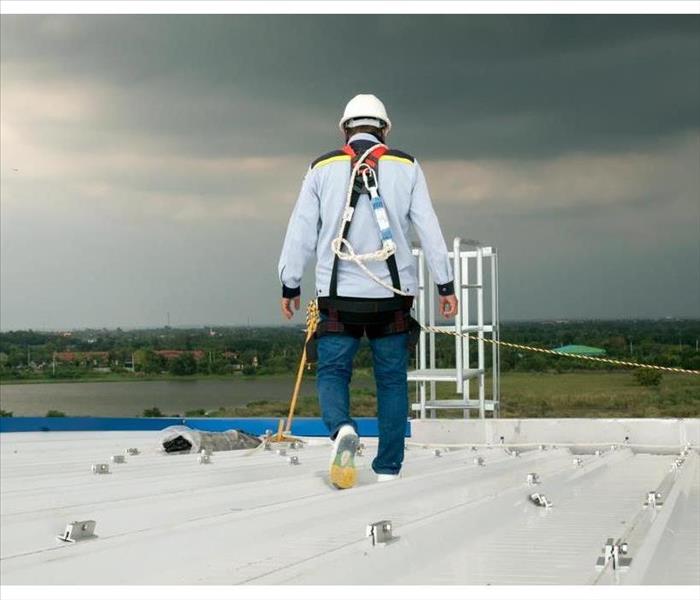 Roof inspection in Chalfont, PA.
Roof inspection in Chalfont, PA.
Storm Preparedness
When a severe storm is on its way in Chalfont, PA, it is essential to protect various parts of your building to reduce potential damage. Storm preparedness can help your building withstand the fiercest weather conditions.
Inspect the Roof
Your roof protects your entire building and the people inside it. Scheduling routine roof inspections and repairs is a critical aspect of property management to prevent costly storm damage. A fragile roof under the weight of heavy snow or rain, or with exposure to strong winds, can ultimately lead to:
- Interior flooding
- Structural damage
- Property loss
- Mold problems
It is also prudent to remove any objects from a roof that can cause damage elsewhere if they are carried away by strong winds.
Clear the Property Grounds
All unsecured objects, including signs, outdoor furniture, stones and tree branches should be removed from the ground near your property immediately following a severe storm warning. Strong winds can hurl these objects through glass windows and doors or deposit them on your building's roof causing cracks.
Acquire a Generator
Many storms lead to widespread power outages which can negatively impact your business. Purchasing and maintaining a generator is vital to your storm preparedness plan and will ensure that your business continues to operate despite a loss of electricity.
Install Lightning Protection
Lightning that strikes your building can cause a fire, property loss or injury, and interrupt vital services. Thorough property management in storm-prone regions includes installing a lightning protection system that can reduce these risks.
Gather Insurance Details
Keep insurance details in an easily accessible place to prevent delays that could affect your coverage following storm damage. A disaster recovery service can help coordinate all post-storm cleanup efforts with your insurance provider.
Plan Communication Options
Lack of communication can make your building's residents anxious as they await guidance. Consider designating team members to communicate with tenants in each building section or installing an automated emergency alert system to send vital updates.
Storm preparedness can minimize the damage to your business following a severe storm in Chalfont, PA.
3 Tips for Avoiding Mold Growth in Your Restaurant's Kitchen
3/22/2022 (Permalink)
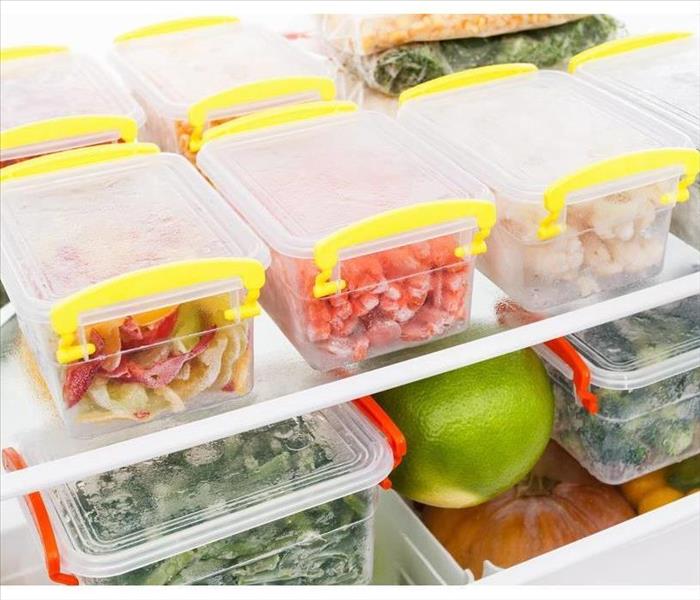 Protect your food from mold growth.
Protect your food from mold growth.
Tips To Avoid Mold In Your Restaurant Kitchen
Running a restaurant in Doylestown, PA, can be incredibly enjoyable, but there are some issues you might encounter. One to watch out for is mold growth in the kitchen, which is essential to avoid if you're selling food. If you're wondering how to prevent this, here are three tips for avoiding mold in your restaurant kitchen.
1. Watch Your Food
One of the main ways a restaurant can attract mold growth is through its food. If your food is damp and unprotected, it could begin to get fungal spores. This can eventually result in rotten supplies, so keeping a sharp eye on your ingredients is essential. If you do find fungus, throw out everything that has it. Although it may be tempting, don't save supplies by cutting away the moldy area. Here are some tips for keeping your food mold-free:
- Get fresh supplies regularly
- Keep storage areas clean
- Inspect items that were near the mold
- Focus on your fruits and vegetables
2. Avoid Humidity
Humidity is an almost sure creator of mold, so avoiding it is crucial. This is especially important if you live in a climate with high humidity or your store is outdoors. If you can get your levels between thirty and fifty percent indoors, you'll be fine. Otherwise, you might want to invest in some dehumidifiers.
3. Use Ventilation
Ventilation is crucial to reducing humidity. Essentially, it keeps humid air from remaining in place. It also prevents water damage from the accumulation of moisture. Therefore, you'll want to be sure that you have the right ventilation for your space. Even if you want to save money, don't get a small system if you have a large kitchen. Avoiding mold is worth the investment.
If you stay vigilant, you can protect yourself against major mold growth in your restaurant's kitchen. In the event that you find some, a mold remediation company can get rid of it.
The Importance of Fast Response to Commercial Property Damage
3/15/2022 (Permalink)
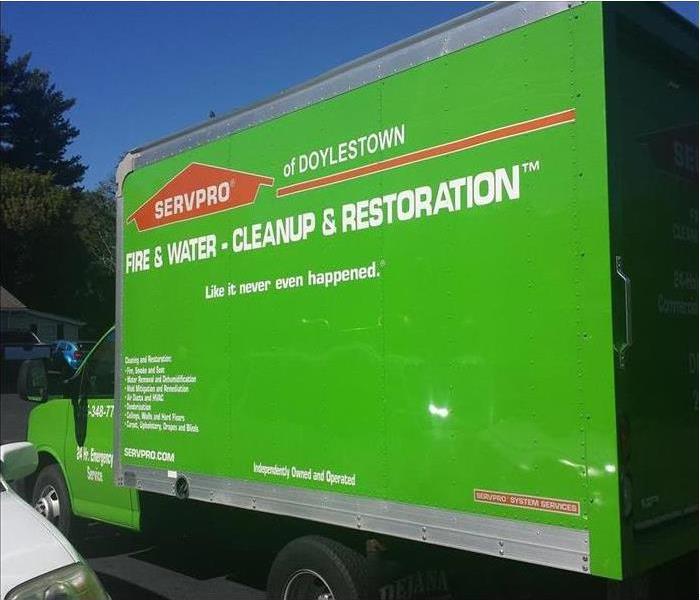 SERVPRO of Doylestown is available 24 hours a day.
SERVPRO of Doylestown is available 24 hours a day.
The Importance of Fast Response
Anything can happen in a 24-hour span, including incidents that damage New Briton, PA, businesses. When you look for a vendor of restoration and cleanup services, you might prefer one that can respond to situations at any time and quickly. Learn more about the importance of fast response and how some vendors specifically focus on this feature.
24/7 Accessibility Is Important
Disasters can strike at any point, from fires and floods to storms and mold infestations. Your clients need access to immediate help the moment they find something wrong within their facility. A remediation company that provides 24/7 access can record their situation properly and send help fast. Greater access also instills more trust with the clients. They can call when the damage first manifests and is easier to control and repair, which reduces potential costs.
Damage Progression
Damage can increase during the first few minutes and especially after a day. For instance, if a client has water damage, the effect may progress over the following timeline:
- Objects absorb water and begin to discolor, swell and warp after a few minutes
- Stains, cracks and odor manifest the 24 hour period
- Mold and mildew develop between 48 hours up to a week
- Damage becomes biohazardous and expensive to repair after a week
Most types of damage tend to spread when they are left unattended. Look for a company that values quick action, especially when it offers a concrete response schedule.
How SERVPRO Stands Out
Certain companies such as SERVPRO are always open to business owners when they need them the most. After a call is made, they usually respond within the hour to arrange an appointment. A team of professionals will arrive at the client's location near New Briton, PA, within four hours. Finally, a detailed inspection and a complete verbal briefing of it would be done within eight hours, long before significant damage sets in.
Commercial property damage can spread and escalate over time, which makes matters difficult for you and your clients. Find a restoration company that offers 24-hour services for the best results.
Category 1 Water Does Not Mean Category 1 Water Damage
3/1/2022 (Permalink)
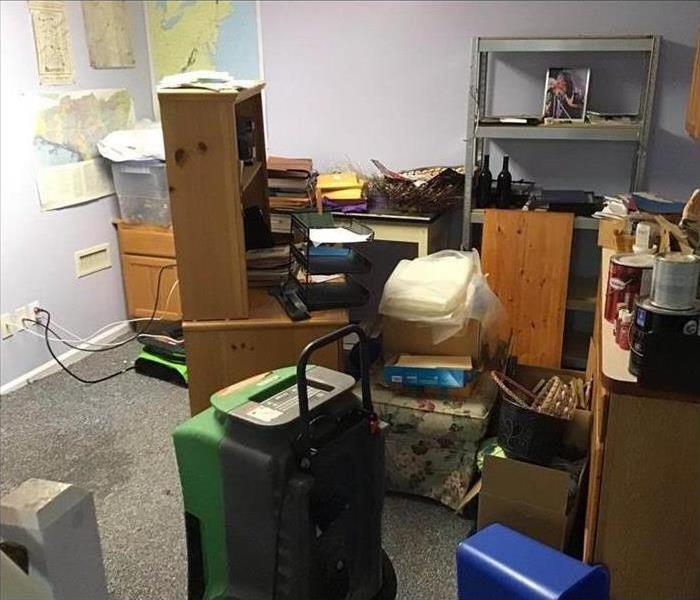 Water damage in a building in Buckingham, PA.
Water damage in a building in Buckingham, PA.
What Damage Can Water Category 1 Cause?
Any broken pipe or supply line in commercial buildings in Buckingham, PA, can lead to severe water damage. Experts in commercial restoration know that no two water damages are alike; a lot depends on the category of water involved. If you’re dealing with water damage due to category 1 water, you are exposed to sanitary water. Clean water does not pose a substantial risk to your health. What is category 1 water exactly, and what damage can it cause?
1. What Is Category 1 Water?
Category 1 water starts from a sanitary source. Examples of sanitary sources are faucets, toilet tanks, and drinking fountains. Water that falls into this category poses a minimal risk of exposure through inhalation, skin, or oral consumption. Nevertheless, be advised that this water can turn into unsanitary water based on time and temperature. Just because it’s category 1 water doesn’t mean that it cannot cause extensive damage. Clean water can cause four types of water damage.
2. What Are the Main Types of Water Damage?
Class 1 is the easiest to deal with as only small amounts of water are involved. Absorption and evaporation are minimal issues. The damage is limited to one room or one specific area. Carpet is only slightly or not affected at all, and only materials with low porosity have absorbed water.
Class 2 damage is characterized by larger amounts of water and a higher evaporation rate. At least all the carpet in a room is affected and walls are soaked in water up to 24 inches. The structure and substructure have absorbed moisture.
Class 3 water damage means that enough water has filled the area to be evaporated into or absorbed by everything in the room. It’s not uncommon that the water comes from overhead. Walls, insulation, ceilings, carpets, and sub-floors are saturated.
Specialty drying situations fall into class 4. Enough time has passed for water to affect materials with low porosity, including brick and concrete.
Clean water might be sanitary but it can be responsible for extensive damage. As soon as you notice a broken pipe or supply line, it’s important to take action.
3 Alternatives to Candles in Your Home
2/25/2022 (Permalink)
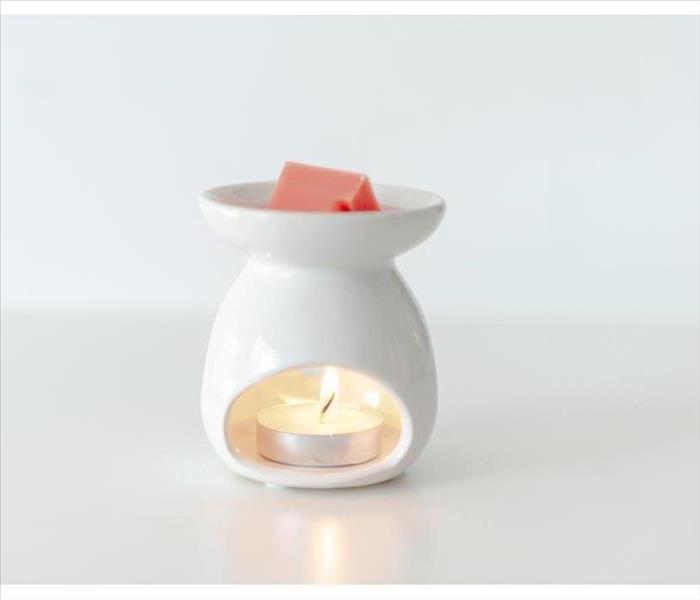 A wax warmer is one of many popular candle alternatives.
A wax warmer is one of many popular candle alternatives.
Candle Alternatives
A fire in your home in Chalfont, PA can be disastrous, and candles are a common cause of home fires. Although candles can add a pleasant scent to your home, there are various candle alternatives that are considered to be safer.
1. Oil Diffusers
Oil diffusers are simple to use and can help to promote a calming atmosphere in your home. A few drops of essential oils are added to water, and the diffuser will distribute the oils into the air in your home. Essential oils come in a wide range of fragrances, though it’s often important to make sure the oils you use are safe for pets and young children. Oil diffusers come in many styles, making it easy to find a diffuser that fits in with your home.
2. Wax Warmers
A wax warmer is one of many popular candle alternatives. A wax warmer allows you to experience the fragrance of your favorite candle while minimizing the risk of a fire. Wax warmers are often inexpensive, and many stores offer their signature candle fragrances in waxes. If you have a candle that you don’t want to go to waste, it’s also possible to remove the wax from a candle and place it into the wax warmer.
3. Candles Without Flames
Candles often add a feeling of coziness to a home, but the risk of a candle fire can make candles less enjoyable and safe to use. However, flameless candles are often an excellent alternative. Candles without flames can still provide a warm glow to an area and can appear extremely realistic. Unlike regular candles, however, candles without flames are long-lasting and do not need to be replaced frequently.
Oil diffusers, wax warmers and candles without flames are candle alternatives that offer many of the benefits of candles without the risk of causing a fire. Many people whose homes have been damaged by a fire find it helpful to contact fire damage restoration professionals.
What Is IICRC Certification?
2/19/2022 (Permalink)
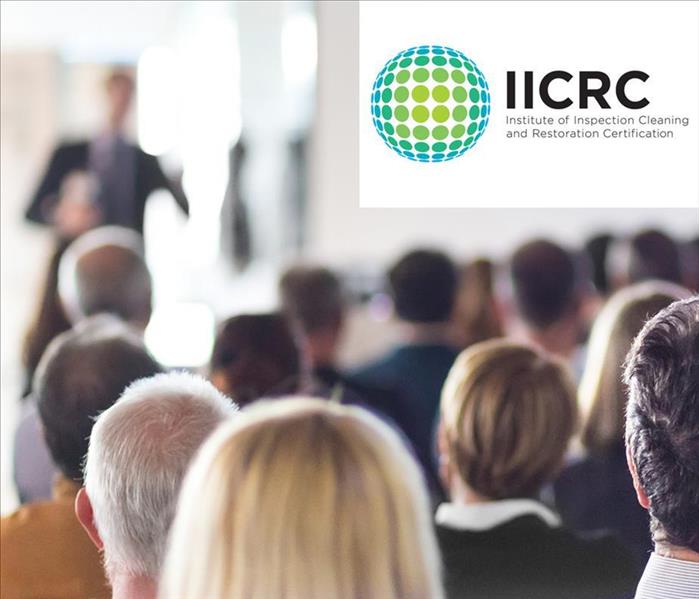 SERVPRO is an approved IICRC training school that offers training in certified cleaning and restoration methods, as well as a mitigation certificate.
SERVPRO is an approved IICRC training school that offers training in certified cleaning and restoration methods, as well as a mitigation certificate.
What Is IICRC Certification?
The Institute of Inspection Cleaning and Restoration Certification is a third-party certification agency for the restoration industry. The IICRC is a member and accredited standards developer for the American National Standards Institute and also develops and maintains BSR standards. Find out more about these standards and the certification process.
ANSI and BSR Standards
A number of standards fall under the purview of this organization. These standards cover most of the major types of restoration:
- ANSI S500 for Professional Water Damage Restoration
- ANSI S520 for Professional Mold Remediation
- BSR S700 for Professional Fire and Smoke Damage Restoration
There are many other standards pertaining to cleaning, maintaining and restoring other types of materials. This certifying body develops and maintains these standards in cooperation with ANSI to establish best practices for the professional mitigation and restoration industry.
Employee and Franchise Certification
SERVPRO is an approved IICRC training school that offers training in certified cleaning and restoration methods, as well as a mitigation certificate. A wide range of certifications are available for specific contents and materials as well as different types of disaster cleanup and restoration:
- Applied Structural Drying Technician
- Carpet Cleaning Technician
- Fire and Smoke Restoration Technician
- Mold Removal Specialist
- Water Damage Restoration Technician
In order to be considered certified, a firm must employ at least one trained Technician. Franchise owners and employees can also participate in continuing education and e-learning programs. Cleaning and restoration technicians are required to earn 14 continuing education credit hours of approved instruction every four years. SERVPRO makes it possible for franchise owners and employees to earn and maintain this industry-leading certification.
IICRC certification makes it more likely that insurance company vendor networks will include a franchise or local company in Cheltenham, PA. For the best results, insurance representatives and homeowners should make sure that the mitigation and restoration service they plan to use holds this industry-leading certification.
How To Identify the 3 Types of Flood Water
2/8/2022 (Permalink)
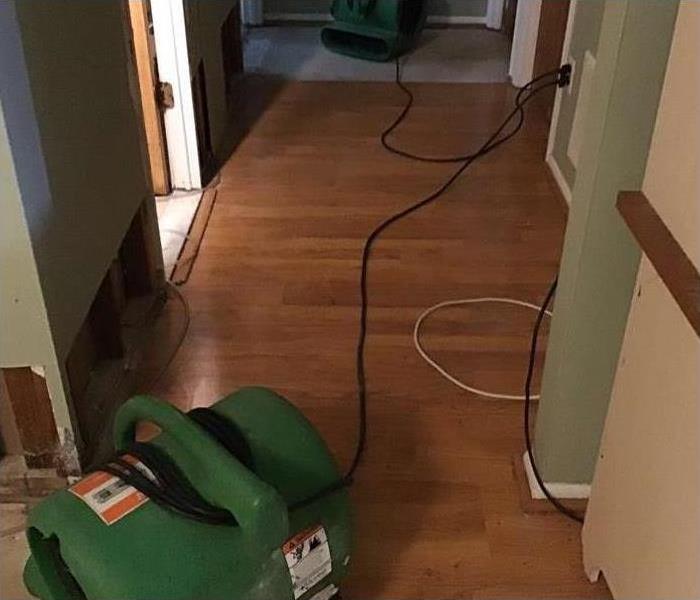 A pipe break causes water damage in a home in Whitemarsh, PA.
A pipe break causes water damage in a home in Whitemarsh, PA.
Three Classifications of Water
If you’re dealing with flooding in Whitemarsh, PA, you may be eager to start the clean-up process as soon as possible. It can be helpful to understand the three classifications of water so that you know exactly what you’re dealing with from the start.
1. Clean Water
Clean water is any water that comes from a source you could safely drink. While it can still cause a lot of damage if it floods into your home, it may not be as difficult to clean up as the other types of water.
These are common sources of clean water:
- Snow Melt
- Rain
- Sinks
- Showers
It is important to remember that even though the water may initially be from a clean supply line, it can quickly become contaminated after prolonged contact with unclean surfaces. It can be best to hire a damage restoration company to help you clean up water, no matter what type it is.
2. Contaminated Water
Contaminated water is sometimes referred to as gray water. This water can contain harmful microorganisms and substances that are dangerous if ingested. Gray water is usually the result of clean water becoming contaminated. It is not safe for drinking and should be cleaned up as quickly as possible.
3. Black Water
Black water is the most contaminated type of water. It usually comes from extreme outside flooding or sewage leaks. If it gets into your home, serious measures may have to be taken to decontaminate and disinfect the items it comes into contact with. Porous items, carpet, and drywall may have to be replaced after black water flooding.
Flooding can create a serious mess, but its effects can usually be reversed. A damage restoration company should be able to help you handle flooding from any of the three types of water. If contaminated water has entered your home, these professionals can help you with the deep cleaning procedures required to handle it.





 24/7 Emergency Service
24/7 Emergency Service









